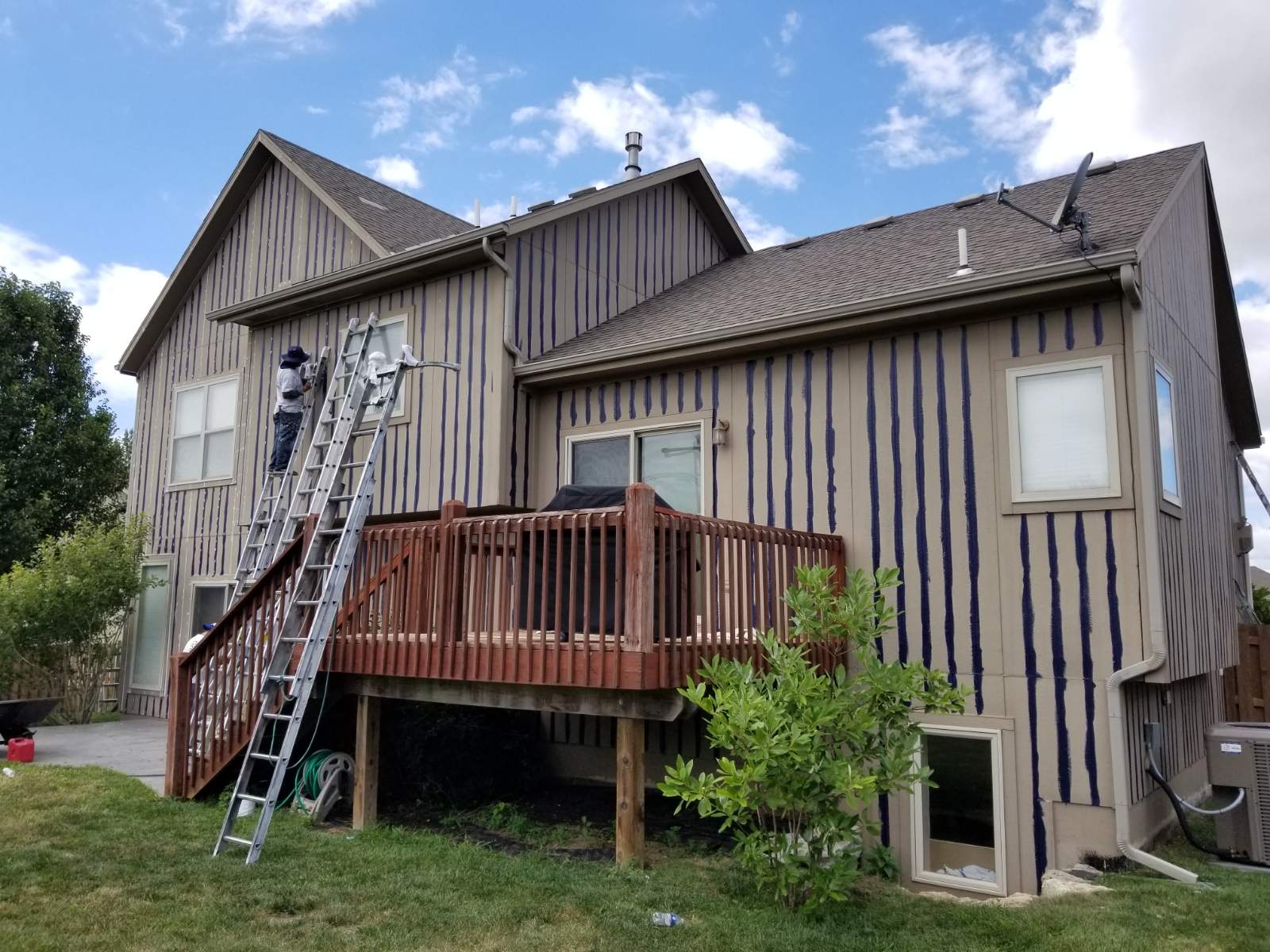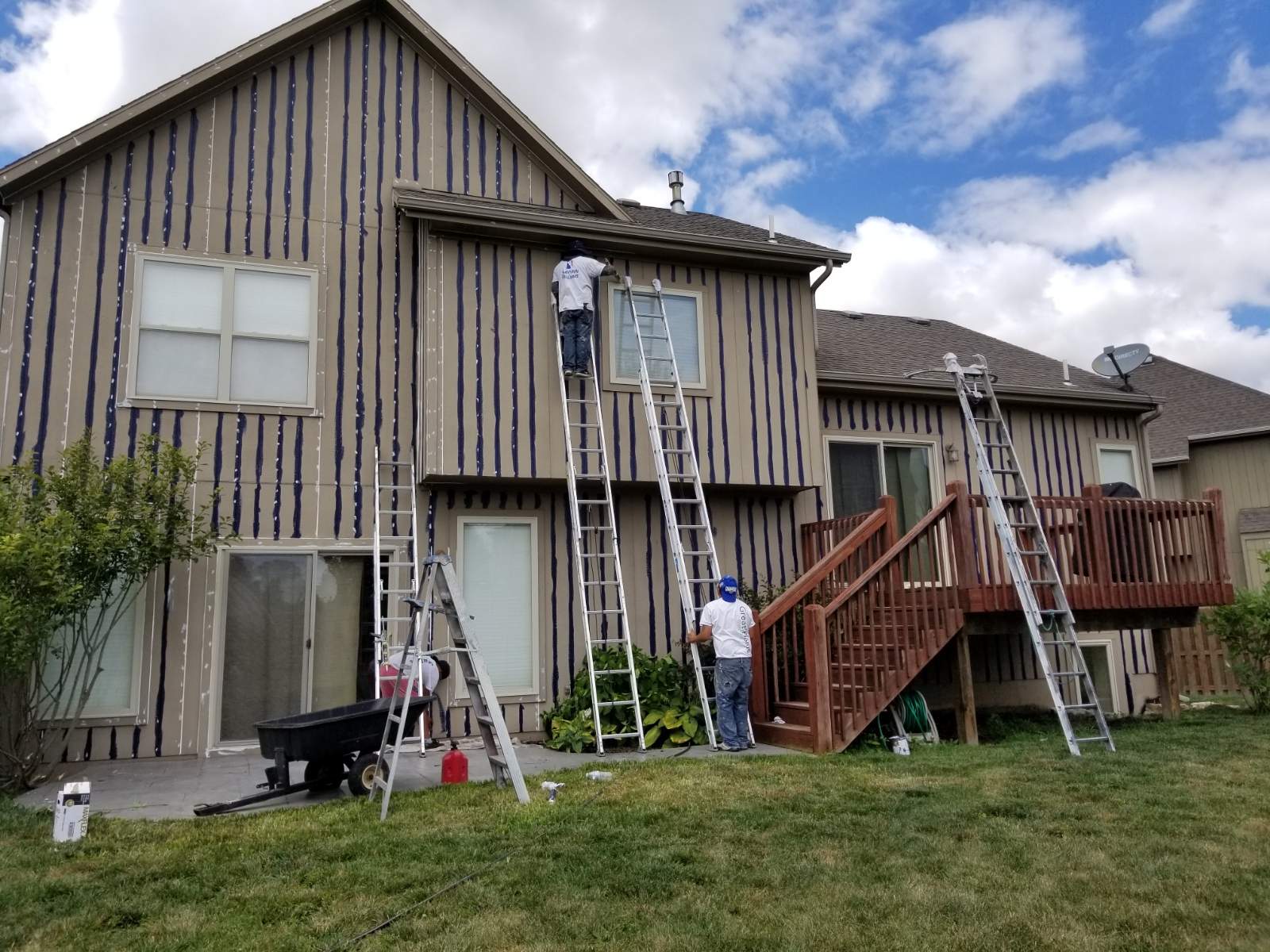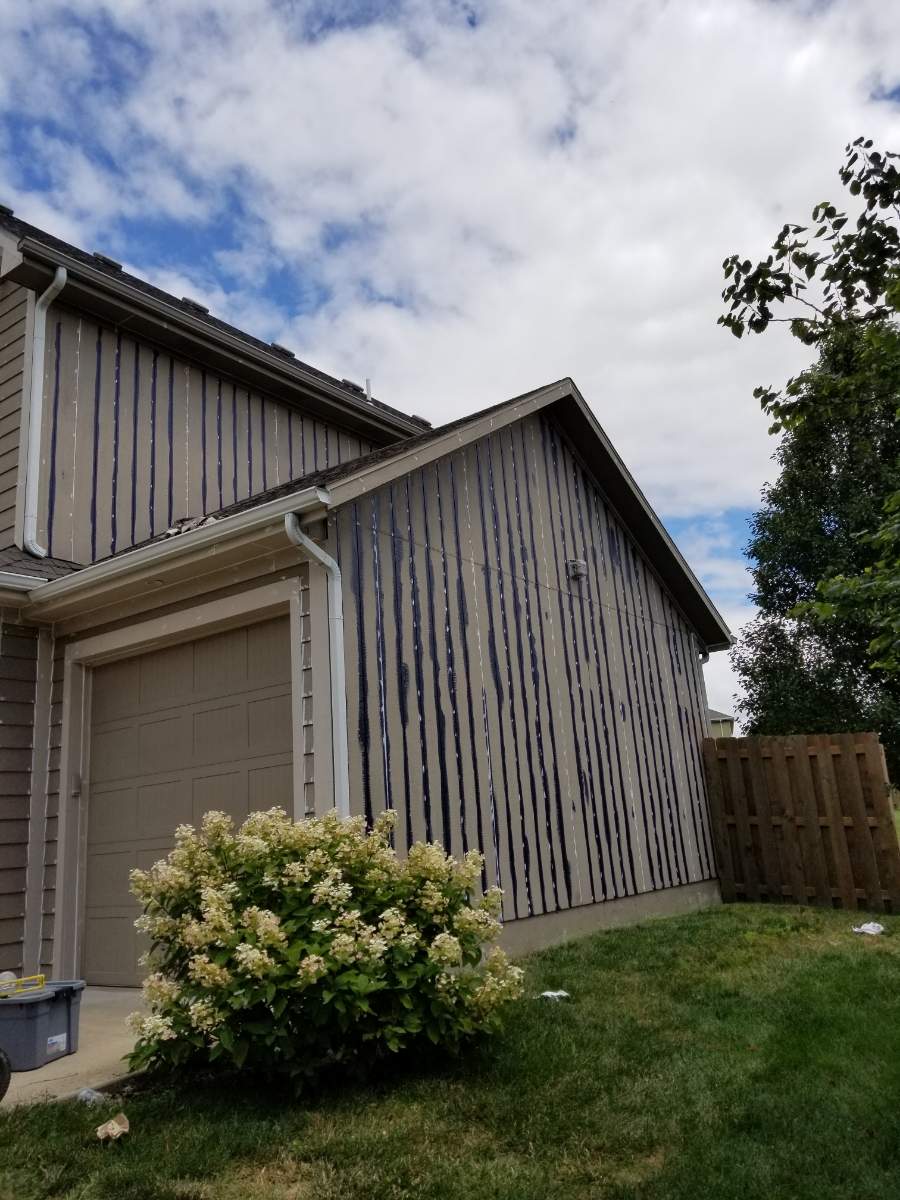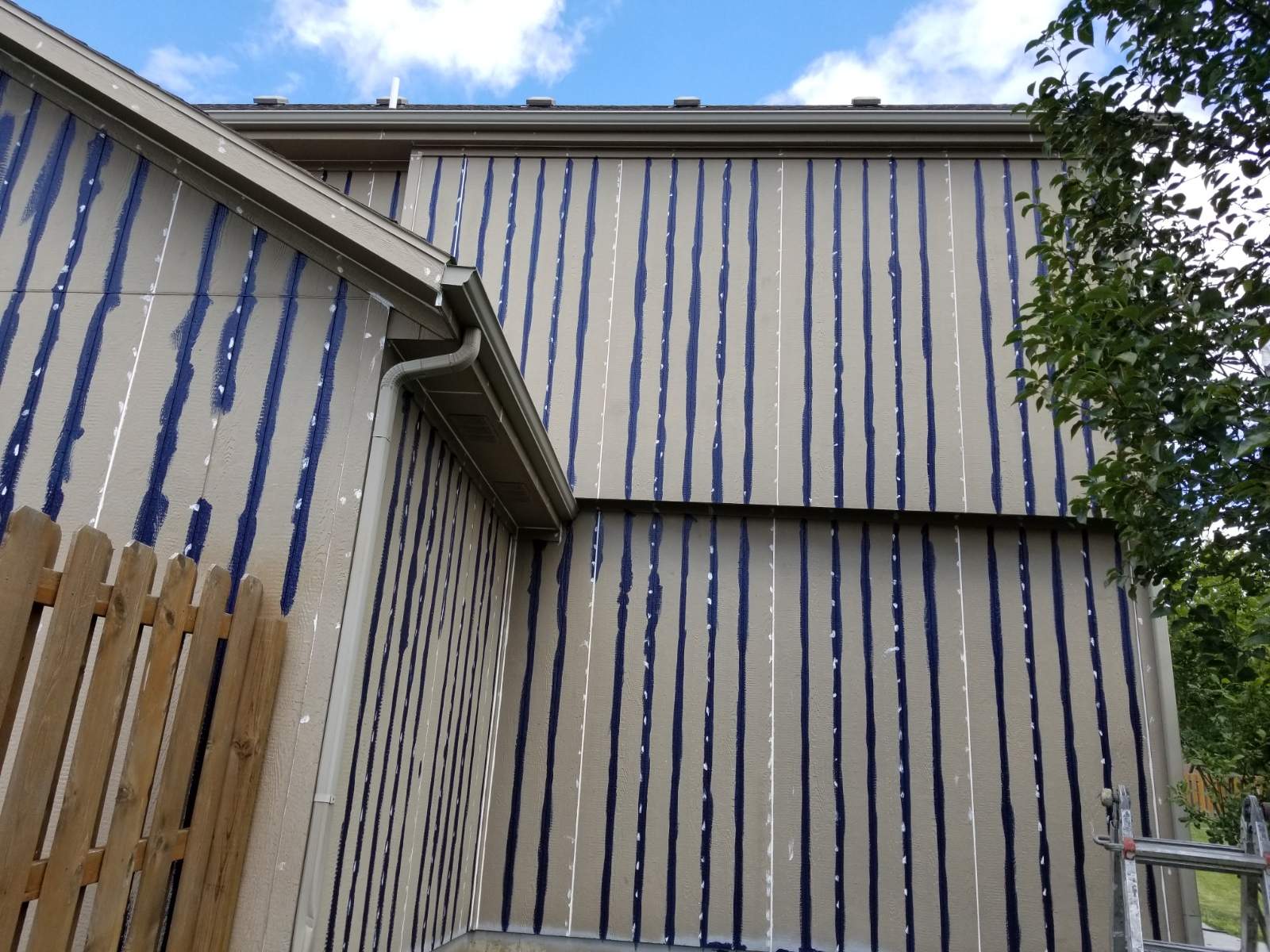Prep Work for Exterior Painting - Overland Park
In our experience, exterior painting companies approach prep work (or lack thereof) in different ways. Properly preparing a house for paint is a crucial step, if not THE crucial step in the process of painting a house. As a general rule:
proper prep = long lasting, good looking paint job
improper prep = a paint job that may fail quickly
Over the next few weeks we’ll write about how we approach exterior painting prep work. We’ll cover what we think is important and how we do what we do to ensure the paint we apply lasts as long as it possibly can. This week, we’ll look at prep work that is fairly unique to us. We call it “Tiger Striping”.
Tiger Striping
First, what are we talking about. Below are some pictures so we can visualize what it looks like to Tiger Stripe a house.
 |  |
|---|---|
 |  |
 |
A brief description of the panel
This particular home is sided with LP Smart Side Panels. These are part of a modern siding system common and found on many homes in the Overland Park / Kansas City metro area. Smart side panels come in 4’ wide x 8’ or 9’ tall panels. LP mills a groove every 8” on center into the panel. These grooves allow for a little more flexibility across the panel.
Why the panels are great
In our experience, smart panels, and smart siding in general (LP also makes lap siding, shingles, etc…) they are an excellent building material. Aside from the milled grooves, the panels are what we’d call non-porous. Meaning there aren’t pores in the surface that water can penetrate and cause rot.
The panels retain paint well, that means that paint likes to bond to the surface. We rarely see peeling paint as an issue on smart siding products.
LP Smart Siding products are readily available at building suppliers so that if we need to replace something, we have an easy time tracking down the material we need.
Failure modes of the panel
The generation of panel used since the early / mid 90s is excellent. We rarely see them fail, unless there are certain sets of circumstances present. Where we see these panels fail is:
- Rot beginning along the bottom edge when bushes are present right next to the house. The bushes keep the bottom edge shaded and don’t allow water to eveaporate and the bottom edge to dry out.
- An automatic sprinkler that continually sprays water on the siding. If this happens daily or every two days and the panel isn’t allowed to dry out between automatic sprinkler sessions, we see the panels begin to rot where the sprinkler hits them.
- Along the milled grooves. This can be in the form of rot, but usually is not. This failure mode involved the paint cracking out in these grooves.
Paint Application on Smart Siding
When we paint a home with this type of siding, or similar, we are generally applying the paint via our airless spray equipment. If we go about painting this house without specifically doing what we’ve done in the pictures above, within 5 years the paint in the grooves can (but doesn’t always) begin to crack. Typically to get the paint to lay in nice in the grooves we have to backroll the grooves as we’re spraying the paint.
Theres not anything wrong with this method, and it does work. But we decided we’d try and find a better way to address failure mode 3 above, and that’s what resulted in what we call “Tiger Striping”.
Tiger Striping
This Tiger Striping we perform addresses failure mode #3, the milled grooves. In the home we’re working on in the pictures above, we’re painting the home with Sherwin Williams Emerald, an upgraded paint option we offer. Emerald is Sherwin’s top of the line exterior paint, and is what is referred to as “self priming”. This means we can use it as a primer coat.
To address the issues of the paint cracking in the milled grooves on the panels, we apply a primer coat via a brush on each of the grooves. When we’re working with an Emerald level or equivalent product, we use the product itself as the primer coat. When we’re painting with our base level paint, Sherwin Williams SuperPaint, we normally use a bonding primer called PrimeRX.
Once we’ve hit all the grooves with a primer coat, we can apply the top coat all via airless sprayer without having to touch the home with a brush or roller. This results in the nicest looking, most uniform finish possible.
Pro / Cons of Tiger Striping:
- Pro - nicest looking finish because top coat applied all via airless equipment
- Pro - grooves addressed. will not have issues with paint cracking on subsequent painting projects in future. address once, and don’t worry about again
- Con - a little more expensive due to the extra labor involved
- Con - house looks a litte strange for 1 or 2 days while we’re completing the proces
If your home is sided with smart panels, our estimators always take a look at the grooves during your estimate and let you know if we’d recommend Tiger Striping your home. We include a summary of this information in the client folder we provide to you at the time of your paint estimate so you can weigh the pros and cons while making your decision.
If you’ve got questions about our exterior painting prep work, make sure we know what they are so we can provide you with the information you need to answer them. Contact us today.